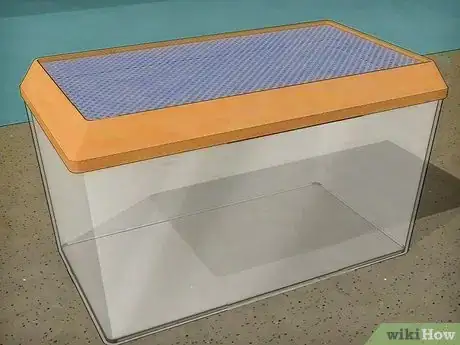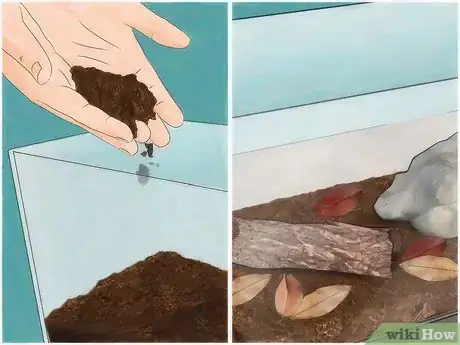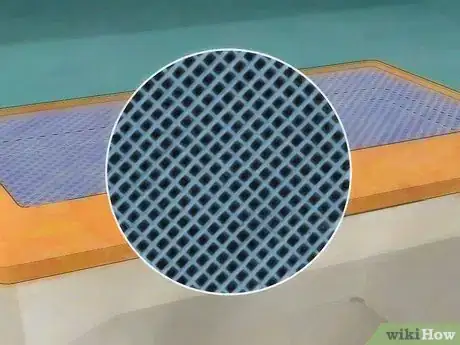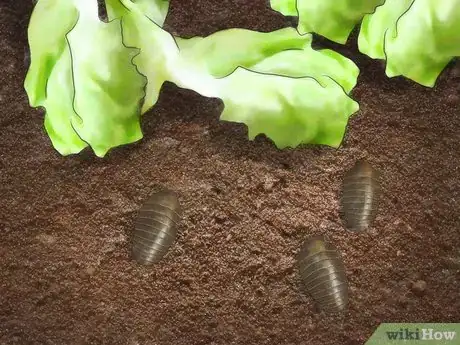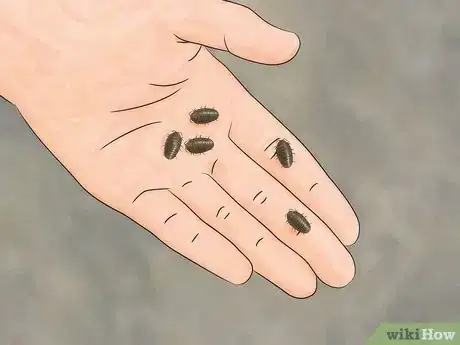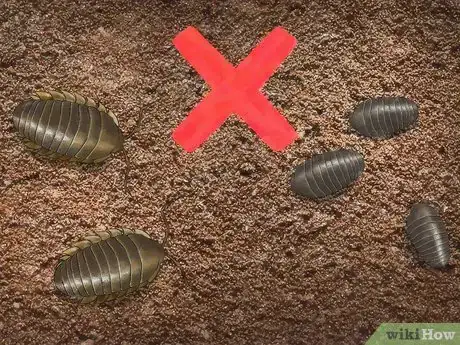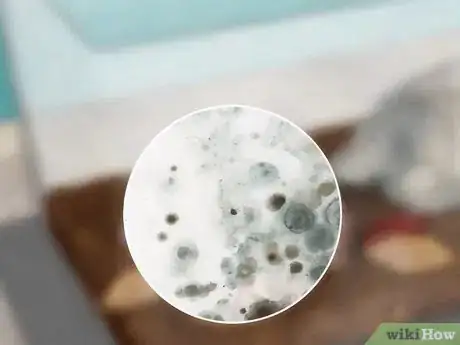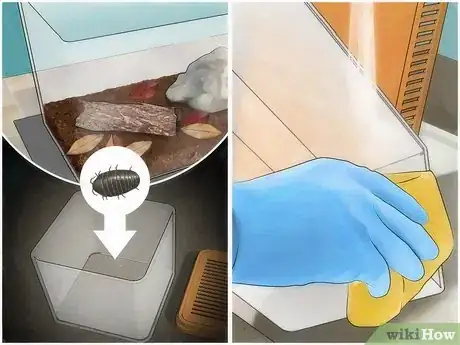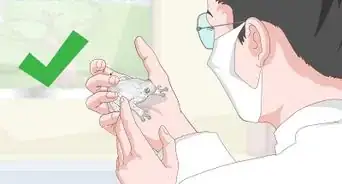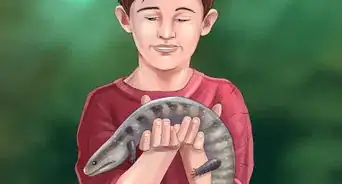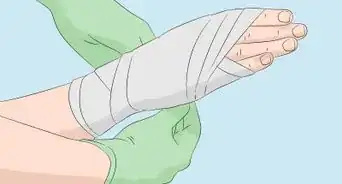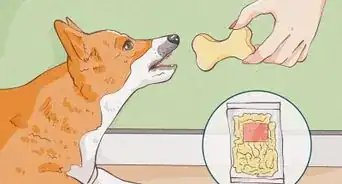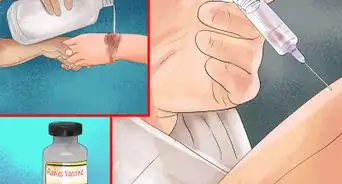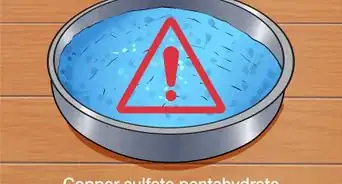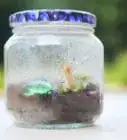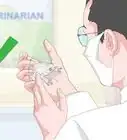This article was co-authored by Pippa Elliott, MRCVS. Dr. Elliott, BVMS, MRCVS is a veterinarian with over 30 years of experience in veterinary surgery and companion animal practice. She graduated from the University of Glasgow in 1987 with a degree in veterinary medicine and surgery. She has worked at the same animal clinic in her hometown for over 20 years.
wikiHow marks an article as reader-approved once it receives enough positive feedback. This article received 30 testimonials and 93% of readers who voted found it helpful, earning it our reader-approved status.
This article has been viewed 123,736 times.
Pillbugs are small, round bugs that live in many parts of the country. Due to the fact they're easy to handle, many people enjoy keeping pillbugs as pets. You can find pillbugs outdoors, usually under rocks or in other moist areas. If you want to keep pillbugs in your home, make sure you know how to create and maintain the proper environment and feed the pill bugs the correct diet.
Steps
Creating an Environment
-
1Use a plastic tub or aquarium for housing. As pillbugs require a damp environment to thrive, you should pick a container that's resistant to water. Go with something made of plastic or glass rather than cardboard.
-
2Fill the container with grass and dirt. Once you've secured a container, you can begin creating the proper environment for your pillbugs.
- Fill the bottom of the container with one to one and half inches of moist soil or sand. You can purchase sand or soil from a pet store or greenhouse.
- Pillbugs also enjoy wood bark, leaf litter, and other dead vegetation as part of their habitat.[3]
Advertisement -
3Make sure the container is well ventilated. Pillbugs need to live in a ventilated container. Make sure you're able to place small holes on the top of the container, but not too big that pillbugs can escape. Many aquariums come with ventilated lids and you can easily poke holes in the top of a tupperware lid.
Feeding and Caring for Pillbugs
-
1Feed pillbugs a healthy diet. Pillbugs eat mostly decomposing vegetables in the wild and should have a similar diet in captivity to keep them healthy.
- Pillbugs can safely be fed fish flakes, which you can purchase at a pet store.[4]
- In addition to fish flakes, feed your pillbugs leftover bits of apples, lettuce, potatoes, and carrots. You can also bring leaf litter in from the wild and feed them to your pillbug.[5]
- While you can feed pillbugs food that has been sitting out for a few days, do not offer them moldy food. This can make them sick.[6]
-
2Keep the container humid. Pillbugs require a humid environment to survive.
- Invest in a humidity thermometer to make sure your pillbugs environment is adequately moist. Pillbugs should not live in an environment of less than 75% humidity. They will not survive without proper humidity.[7]
- Mist the container once a day with a spray bottle. Also, make sure to add water to the soil on a daily basis. You can also place a damp cotton ball or paper towel in the container. Just make sure your pill bugs don't eat them!
-
3Replace soil periodically. Waste gases emitted by pillbugs can be strong enough to cause health problems, so soil should be replaced periodically. Make sure you remove all the pillbugs before changing the soil. If your pillbugs have reproduced, babies may be difficult to differentiate from soil. If this is the case, put a piece of wood in the container as babies are likely to congregate there.
-
4Handle pillbugs with care. Most pillbugs can be handled easily, but you should do so with care.
- Gently pick pillbugs up with your thumb and forefingers when you want to handle them. You can also scoop them up with a spoon.
- Make sure not to drop your pillbugs while handling them, as this can cause them pain. They walk fairly fast and can sometimes fall by mistake.
- Never handle pillbugs while they're shedding.
Monitoring the Pillbugs
-
1Do not mix different species. Pillbugs might not be well being mixed with different species. Make sure any bugs you add to your tank are also pillbugs.
- Pillbugs have flattened, round bodies, sharply rounded antennas, and seven pairs of legs. When frightened, they roll into a tiny ball.[8]
-
2Keep mold out of the enclosure. Due to the dampness of a pillbug's environment, you need to make sure their container is mold free. You can do this by periodically switching the soil, as stated, and removing any uneaten food before it becomes moldy.
-
3Periodically clean containers. As containers can grow moldy due to soil, periodically switch your pillbugs into a new, temporary container. Clean the container with soap and water and rinse thoroughly. Then, re-add soil, leaves, and water and put the pillbugs back inside.
Expert Q&A
Did you know you can get expert answers for this article?
Unlock expert answers by supporting wikiHow
-
QuestionHow long can a pill bug live?
 Melissa Nelson, DVM, PhDDr. Nelson is a Veterinarian who specializes in Companion and Large Animal Medicine in Minnesota, where she has over 18 years of experience as a veterinarian in a rural clinic. She received her Doctor of Veterinary Medicine from the University of Minnesota in 1998.
Melissa Nelson, DVM, PhDDr. Nelson is a Veterinarian who specializes in Companion and Large Animal Medicine in Minnesota, where she has over 18 years of experience as a veterinarian in a rural clinic. She received her Doctor of Veterinary Medicine from the University of Minnesota in 1998.
Veterinarian
-
QuestionWhat do roly polies eat and drink?
 Melissa Nelson, DVM, PhDDr. Nelson is a Veterinarian who specializes in Companion and Large Animal Medicine in Minnesota, where she has over 18 years of experience as a veterinarian in a rural clinic. She received her Doctor of Veterinary Medicine from the University of Minnesota in 1998.
Melissa Nelson, DVM, PhDDr. Nelson is a Veterinarian who specializes in Companion and Large Animal Medicine in Minnesota, where she has over 18 years of experience as a veterinarian in a rural clinic. She received her Doctor of Veterinary Medicine from the University of Minnesota in 1998.
Veterinarian
-
QuestionCan pill bugs live in water?
 Melissa Nelson, DVM, PhDDr. Nelson is a Veterinarian who specializes in Companion and Large Animal Medicine in Minnesota, where she has over 18 years of experience as a veterinarian in a rural clinic. She received her Doctor of Veterinary Medicine from the University of Minnesota in 1998.
Melissa Nelson, DVM, PhDDr. Nelson is a Veterinarian who specializes in Companion and Large Animal Medicine in Minnesota, where she has over 18 years of experience as a veterinarian in a rural clinic. She received her Doctor of Veterinary Medicine from the University of Minnesota in 1998.
Veterinarian
Warnings
- Pillbugs do produce a smell and may attract other bugs to your home.⧼thumbs_response⧽
References
- ↑ http://animals.mom.me/keep-pet-pill-bugs-8103.html
- ↑ http://animals.mom.me/keep-pet-pill-bugs-8103.html
- ↑ http://animals.mom.me/keep-pet-pill-bugs-8103.html
- ↑ http://animals.mom.me/keep-pet-pill-bugs-8103.html
- ↑ http://animals.mom.me/keep-pet-pill-bugs-8103.html
- ↑ http://animals.mom.me/keep-pet-pill-bugs-8103.html
- ↑ http://animals.mom.me/keep-pet-pill-bugs-8103.html
- ↑ http://www3.northern.edu/natsource/INVERT1/Pillbu1.htm
About This Article
Pillbugs are relatively easy to care for if you set up the right environment and feed them a healthy diet. You’ll need a water-resistant plastic tub or aquarium with ventilation holes. Fill the bottom of the container with grass and dirt to simulate their natural habitat. Feed your pillbugs leftover fruit and vegetables, like bits of apple, lettuce, potatoes, and carrots. You can also feed them fish flakes from a pet store. Pillbugs survive best in a humid environment, so mist their container once a day with a spray bottle of clean water. Due to the dampness, mold can grow in their container so make sure you clean it regularly. For more tips from our Veterinary co-author, including how to safely handle your pillbugs, read on!
